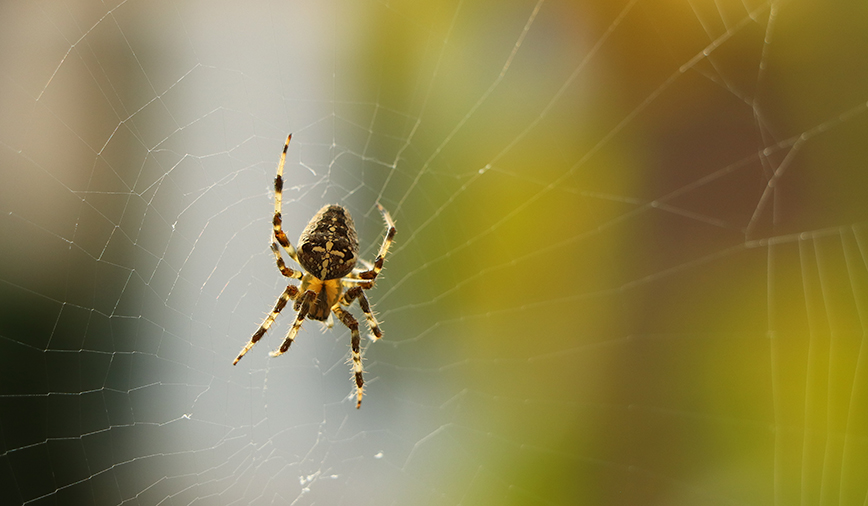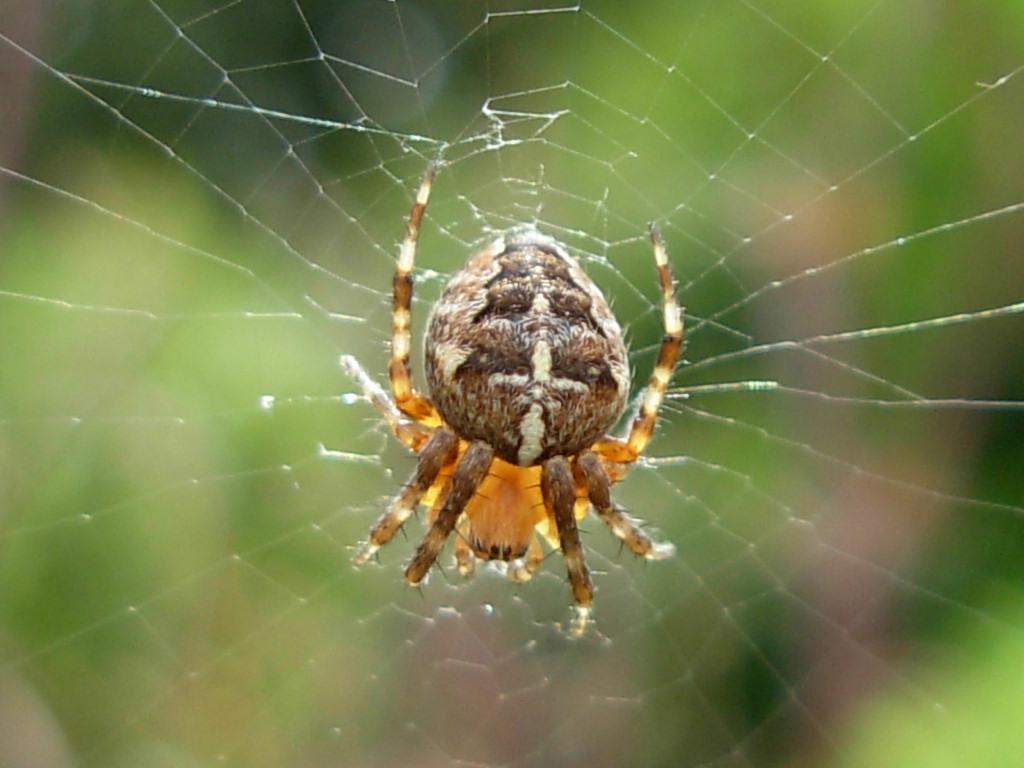Araneus is a genus of common orb-weaving spiders. It includes about 650 species, among which are the European garden spider and the barn spider. The genus was erected by Carl Alexander Clerck in 1757.

INTRODUCTION: The Araneus spider is a member of the garden spiders. The scientific name for this spider is Araneus Transmarinus. There are many kinds of Araneus in Australia. The size of this spider can be 4mm to 26mm in length. This spider usually has a round, plump body with two rounded points on the shoulders. They also have a small head-thorax and eyes. Sometimes the Araneus spider has reddish coloured legs. Females have larger bodies and shorter legs than the males. Most are grey or brown in colour. Some have a lighter or darker pattern on their back but some have a different colour on their back.
Orange and cream, green and cream are the other common colours besides grey or brown. Some have been known to change colour to match the flowers in its surroundings.
HABITAT: The Araneus spider are found all over Australia and in most countries around the wold. This spider makes its web in trees and bushes besides creeks and in gardens. Araneus spiders makes orb webs. They can make these webs up to 70 mm across and a meter or two above the ground. The web is left up most of the time but some take it down of a morning and make a fresh one every night.
It can take an hour for a web to be spun. The spider rests under a leaf or flower during the day. If you walk through a web it will stick to you. Most make vertical webs but a few make horizontal webs. Dry silk extends from the webs center like spokes of a wheel. Sticky silk joins the spokes and becomes an insect trap.
PREY: The Araneus spider eats insects such as moths, flies and beetles. It is also known to catch forty to fifty moths a night. When something is caught in the web, the spider will run across to it and sink its fangs into it. It then ties it up in silk, then becoming the ‘food parcel’. The food is then carried to the centre of the web or to the retreat. When ready the spider will suck the insect dry and the remains are thrown out of the web.
BREEDING: When a male spider matures, it starts looking for a mate. So they are not mistaken for prey, the male acts out courtship activities to attract the females. The male spins a silk platform and puts a drop of sperm on to it from its abdomen. He then fills his pedipalpi with sperm. After mating the female can store the sperm and lay eggs a long time afterwards. If not eaten the by the female, the male will usually die after mating.
Spiders of this genus present perhaps the most obvious case of sexual dimorphism among all of the orb-weaver family, with males being normally 1⁄3 to 1⁄4 the size of females. In A. diadematus, for example, last-molt females can reach the body size up to 1 in (2.5 cm), while most males seldom grow over 0.3 in (1 cm), both excluding leg span. Males are differentiated from females by a much smaller and more elongated abdomen, longer legs, and the inability to catch or consume prey bigger than themselves.
In females, the epigyne has a long scape (a tongue-like appendage). Male pedipalps have a hook-like terminal apophysis. Abdominal tubercles are present anterolaterally.


The Araneus spider can lay up to a thousand eggs at a time. Once laid the eggs are then wrapped in a silk sac and are laid on a plant. If the weather is cold hatching will take longer than the normal four to seven weeks. Spiderlings hatch inside the egg sac and live off the yolk until the weather is warm. A spiderling has no spinnerets and no eyes until it moults for the first time. The spiders usually moult when they are a few weeks old. The spiders are now ready to leave the sac. The young spiders leave at the same time. The Araneus spider does this by ballooning. The spider will hold up its spinnerets towards the wind so silk is pulled out. When enough silk is out the spider lets go with its feet and lets the wind carry it away.
VENOM: The Araneus spider is not venomous to humans. Pressure Immobilisation technique is used for spider bites. These are the steps used if bitten by an unidentified spider: Wrap a bandage tightly over the bite. Use a cold towel instead of a pressure bandage in case of a red back bite. If bitten on the arm or leg use another bandage. Start at the fingers or toes and cover as much as possible of the limb.
Cover firmly but not to tightly because you would cut off the blood circulation. You can tell if the blood circulation is cut off because the fingers or toes start to change color. You should attach a splint or something similar to the limb. You should not allow the person to stand or walk. Get an ambulance to the person. You should only move the person if the ambulance will take longer than two hours to reach you. Do not allow the person to remove the bandage until medical help arrives.
Description
Spiders are insect relatives. These abundant and important predators have eight walking legs, six to eight eyes, and two body regions. The first body segment, called the prosoma, contains the eyes, mouthparts, and legs. The second region is the abdomen, which has spinnerets at its base that produce silk.

Distinctive Features
Orb weavers are a large family, the size and color patterns found within this group are immense. Sometimes the easiest way to identify an orb weaving spider is by their large, orb shaped web. The orb weaver family includes some of the largest spiders. The spider in “”Charlotte’s web”” was an orb weaver.
Life Cycle
Spiderlings emerge from an egg sac secured in the web, and undergo several molts until they become an adult.
Prey
Various flying or hopping insects.
Habitat
Orb weavers can spin their web between practically anything stationary, such as trees, plants, shrubs, buildings, windows, etc.
Floral Resources
Spiders in this family are not known to feed on pollen or nectar.
Distribution
Most states coast to coast between Canada and Mexico.
Origin
Native.
Occurrence
Common.
Size
5-25 mm.
Color
Tan, brown, red, gold, yellow, red.

Acknowledgements
We thank the North Central IPM Center for funding this project and members of the Great Lakes Vegetable Working Group for supplying the bulk of the content. We also acknowledge Michigan State University, Oregon State University, the Xerces Society, and USDA Agricultural Research Services for their support and contributions to the development of this smartphone app.
Some information regarding pollinators and habitat management was adapted with permission from Attracting Native Pollinators, the Xerces Society’s guide to protecting North Americas bees and butterflies. The bulletin “How to Reduce Bee Poisoning from Pesticides (PNW 591)” is used with permission, copyright Oregon State University. Information about colony collapse disorder and the value of pollinators to agriculture was excerpted from the USDA ARS website. Images used from Bugwood include the proper citation number.
